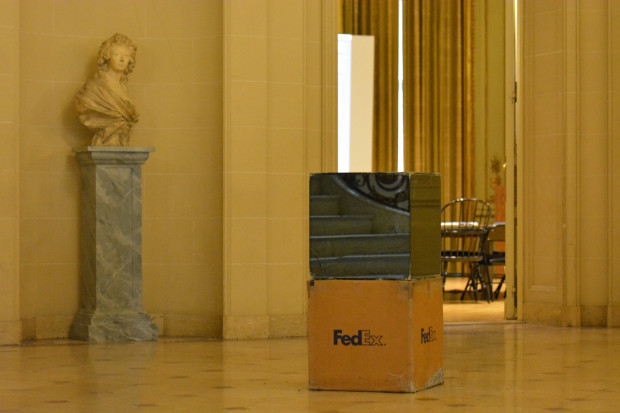My interest in inviting Walead Beshty to exhibit at the Institute was rooted in the nature of his work and the questions it raises for the art historical field. Beshty’s commitment to exposing systems, the movement and handling of works of art and the evolving meaning of the art object engenders timely and critical questions that challenge how we interact with, write about, and historicize art.
I also felt strongly about showing an artist whose work offered a contrast to the regality of the Great Hall but still complemented it. The glowing television, cracked glass cubes and clicking printer bring three new forms—along with novel sounds—into the space, contrasting with the Hall’s decorative mirrors, figurative sculptures, and lavish chandeliers. Between their radical transparency and diligent deconstruction, the works become a metaphor for the task of the art historian: dissecting art to offer a new interpretation of what it means.

When the editors asked Eloise and I to write something about the exhibition, we were hesitant to produce a formal curatorial statement and preferred, instead, to facilitate a dialogue with the various people who have interacted with the works over the past month. As such, we embarked on the somewhat dangerous task of asking our fellow graduate students in art history—and one very special security guard—for their reflections on the show. Each impression was gathered during an informal conversation with the respondent and was impromptu. We wanted immediate reactions rather than formally-composed assessments. Both celebratory and critical, the following is what we heard:
